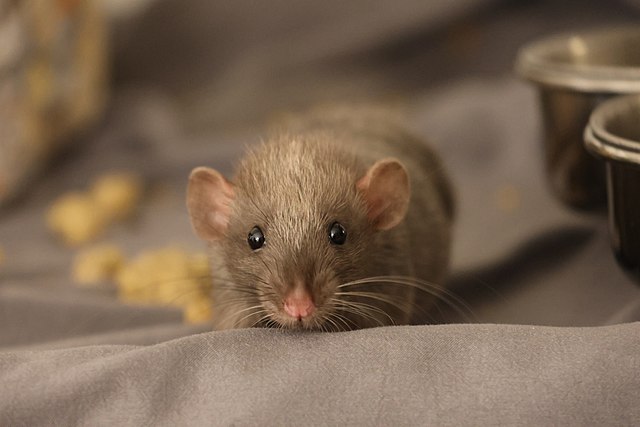
New research published in Science has found that rats can imagine locations they’ve been to before. The section of the brain that is associated with memory and learning, called the hippocampus, is found consistently across animals, including rats. In humans, when navigating from one place to another, the hippocampus is shown to light up with activity, and thinking about that journey afterwards produces the same patterns. Scientists wondered whether the same could be true of rats.
Scientists conducting research at Howard Hughes Medical Institute built a specifically designed 360-degree Virtual Reality (VR) arena, then had three rats walk on a treadmill within the set-up to mimic the feel of walking through a dark tunnel. The rats were trained to find certain shapes in the space, rewarding them with sips of sugar water. As the rats arrived at each spot, activity patterns were recorded by electrodes on their hippocampus onto a brain-machine interface. Just like in humans, each pattern was distinct.
Scientists then expanded upon this experiment by setting the rats two further tasks. They theorised that rats could reproduce these brain patterns by just thinking about the locations and for this they disconnected the treadmill. The first task used the brain–machine interface to take the rodent’s neural activity and reproduce it on screen. When the rats thought of a specific location it was shown and they were once again rewarded. The second task asked rats to move shapes around the virtual environment to another chosen location. They successfully understood that imagining moving instead of physically moving to the place changed the VR. Speaking in the New Scientist Albert Lee, from the Beth Israel Deaconess Medical Centre in Boston, Massachusetts stated that ‘this is the first time it’s been shown that animals can control this internal model of the world in their hippocampus. It’s a critical step that underlies imagination’.
Until technology develops to a greater advancement where a brain-machine interface will allow humans and animals to communicate, we may never know what a rat truly imagines
The implications of this are varied. Lee believes that the similarity of hippocampi across animals means that animals other than rats and humans have similar abilities. However, it is not clear whether rats experience these thoughts consciously or that their subconscious through the hippocampus is predicting what will happen next according to Matthew Wilson, quoted in The Smithsonian. Furthermore, until technology develops to a greater advancement where a brain-machine interface will allow humans and animals to communicate, we may never know what a rat truly imagines.
This research has encouraged scientists to examine closer the extent of rat’s imagination in further studies. Frank Sengpiel at Cardiff University adds that because the rats were actively controlling nerve cells this could prove that ‘rats are not only capable of mental time travel, but also that they are conscious.’ (New Scientist). These results have also upended ideas of distance between humans and our rodent companions. If they have depth of imagination, then maybe they’re closer to us than we realise. Comparing this to how we picture our home, or the holidays might allow us to be more empathetic to rats who could perhaps be doing something similar (albeit more rat appropriate!).


